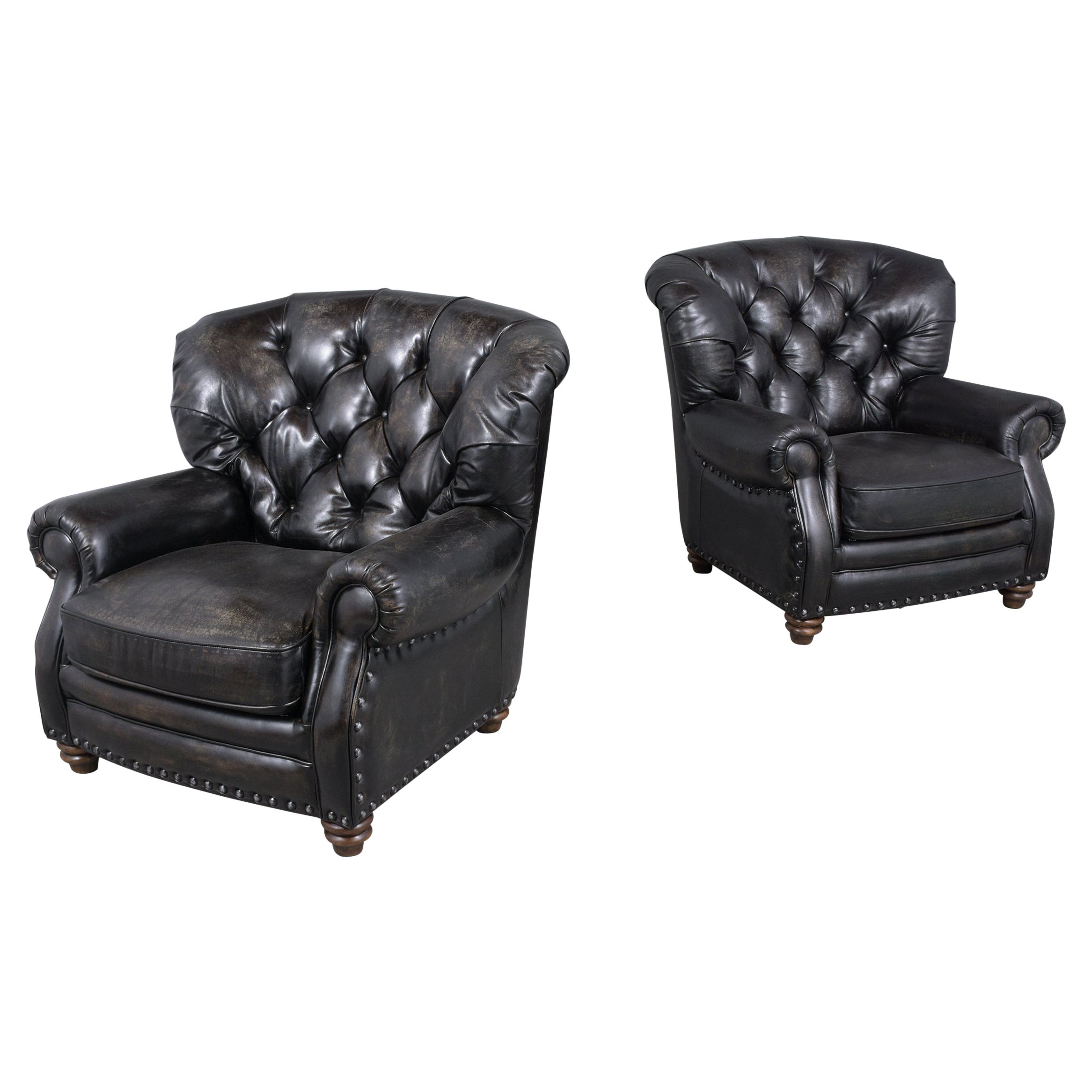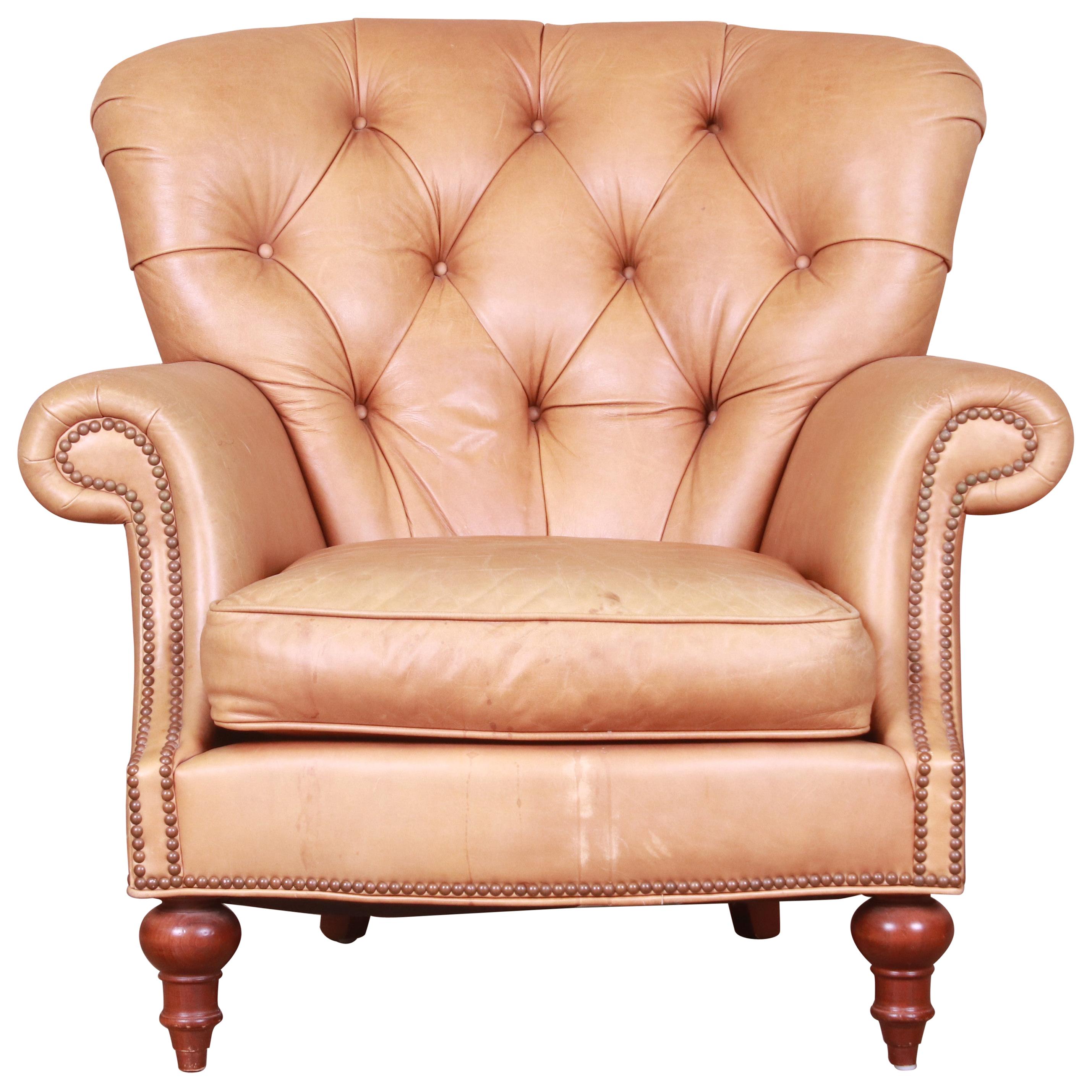Historical Context and Design Evolution of the Black Leather Chesterfield Chair

The black leather Chesterfield—a symbol of sophisticated comfort and timeless elegance—has a history as rich and layered as the leather itself. Its iconic design, instantly recognizable globally, has evolved over centuries, reflecting changing tastes and technological advancements while retaining its core identity. This deep dive explores the chair’s origins, its stylistic shifts, and the meticulous craftsmanship that goes into its creation.
Origins and Historical Significance
The Chesterfield’s origins are shrouded in some mystery, but it’s widely believed to have emerged in England during the 18th century, likely during the reign of King George II. While the exact designer remains unknown, the name is often associated with Philip Stanhope, the 4th Earl of Chesterfield, a man of impeccable taste and style known for his refined social circles. The chair’s design, with its low seat, rolled arms, and deep button tufting, quickly became associated with aristocratic wealth and refined living. Its popularity spread rapidly, becoming a staple in gentlemen’s clubs, grand estates, and increasingly, the homes of the burgeoning middle class as manufacturing techniques improved. The inherent formality of the design, even in its early iterations, solidified its position as a statement piece.
Evolution of the Chesterfield Chair
Initially, Chesterfield chairs were crafted from various materials, including velvet, silk damask, and leather. However, black leather emerged as a dominant choice, likely due to its durability, rich appearance, and association with masculinity and power. Over time, subtle variations in design appeared. Early examples often featured a slightly more upright posture, while later iterations incorporated a deeper, more relaxed seating position. The button tufting, a hallmark of the design, evolved in its density and pattern. The size and scale of the chair also varied depending on the intended use and the available space. Modern interpretations may incorporate slightly more contemporary styling cues, but the core design elements—rolled arms, deep button tufting, and low seat—remain remarkably consistent.
Comparison with Other Seating Styles
The Chesterfield’s distinctive design sets it apart from other seating styles. Compared to the more formal and upright wingback chair, the Chesterfield offers a more relaxed posture. Unlike the less structured and more casual club chair, the Chesterfield boasts a highly structured and tailored silhouette. While similar in some respects to the Victorian era’s plush and ornate seating, the Chesterfield maintains a more streamlined and classic elegance. The clean lines and consistent design elements distinguish it from the more eclectic and less uniform styles of other eras.
Craftsmanship: Traditional vs. Modern Methods
Creating a traditional black leather Chesterfield chair is a labor of love, requiring highly skilled artisans and time-honored techniques. Modern manufacturing methods, while offering greater efficiency, often sacrifice some of the handcrafted detail.
| Method | Traditional Process | Modern Process | Key Differences |
|---|---|---|---|
| Frame Construction | Hand-carved hardwood frame, meticulously joined with mortise and tenon joints, often using steam-bending techniques for the curved arms. | Machine-cut and assembled frames, often using less expensive wood and mass-production techniques. | Traditional frames offer superior strength and longevity; modern frames prioritize speed and cost-effectiveness. |
| Leather Preparation | Leather is carefully selected, hand-cut, and conditioned, allowing for optimal shaping and fitting. | Leather is often pre-cut using automated systems, with less attention to individual hide characteristics. | Traditional methods ensure a better fit and a more luxurious feel; modern methods are faster but may compromise quality. |
| Button Tufting | Buttons are meticulously hand-stitched, ensuring even spacing and a perfectly tailored appearance. | Buttons are often machine-stitched, which can result in less precision and a less refined finish. | Hand-tufting creates a more refined and luxurious look; machine-tufting is faster and cheaper. |
| Finishing | Hand-applied finishing techniques, including waxing and polishing, enhance the leather’s appearance and durability. | Automated finishing processes, often involving spraying and industrial drying techniques. | Traditional finishes enhance the leather’s natural beauty and create a unique patina over time; modern finishes prioritize speed and consistency. |
The Black Leather Chesterfield Chair in Popular Culture and Interior Design

The black leather Chesterfield chair—a symbol of sophistication and timeless elegance—has transcended its origins to become a ubiquitous presence in popular culture and interior design. Its enduring appeal stems from a potent blend of classic aesthetics and versatile functionality, making it a favourite among designers and audiences alike. This enduring presence speaks volumes about its adaptability across various contexts and design styles, from period dramas to modern minimalist homes.
The black leather Chesterfield chair’s appearances in film, literature, and television often reflect its association with power, status, and old-world charm. Its visual weight and imposing presence contribute significantly to the overall mood and narrative.
The Chesterfield Chair’s Portrayal in Media
The black leather Chesterfield chair frequently appears in film and television, often associated with characters of authority, wealth, or a certain level of sophistication. Think of the dimly lit study of a powerful detective, the opulent office of a CEO, or the refined living room of a wealthy family. In literature, the chair might represent the contemplative space of a writer, a symbol of comfort and intellectual pursuit, or even a focal point for dramatic tension. Examples include its presence in numerous detective stories, where the chair serves as a setting for critical conversations and plot developments, and its frequent appearance in period dramas, showcasing the chair’s timeless appeal.
The Chesterfield Chair in Diverse Interior Design Styles
The adaptability of the black leather Chesterfield is truly remarkable. It effortlessly integrates into a variety of interior design schemes, each time lending a unique character.
In a Victorian setting, the chair sits comfortably amongst ornate furniture, rich fabrics, and dark wood paneling, enhancing the overall sense of grandeur and tradition. The chair’s deep buttoning and sturdy frame complement the period’s emphasis on craftsmanship and opulence.
In contrast, a modern minimalist space might feature a black leather Chesterfield as a striking focal point against a backdrop of clean lines, neutral colors, and uncluttered surfaces. The chair’s classic shape provides a touch of unexpected warmth and character, preventing the room from feeling cold or sterile.
Finally, the black leather Chesterfield can also find a place in eclectic interiors, where it acts as a grounding element, balancing the vibrancy of other furniture and décor choices. Its timeless quality serves as an anchor, preventing the room from feeling overly chaotic.
Color Palettes and Complementary Furnishings, Black leather chesterfield chair
The aesthetic impact of a black leather Chesterfield chair can be significantly enhanced or diminished by the surrounding color palette and complementary furnishings. Careful consideration of these elements is crucial for creating a cohesive and visually appealing space.
Here are three design schemes that effectively showcase the versatility of the black leather Chesterfield:
- Classic Study: This scheme utilizes deep, rich colors such as burgundy, forest green, and dark brown. The black leather Chesterfield is complemented by a mahogany desk, antique bookshelves, and plush rugs. Brass accents add a touch of warmth and sophistication. The overall atmosphere is one of refined elegance and quiet contemplation.
- Modern Minimalist: This design features a neutral palette of whites, grays, and blacks. The black leather Chesterfield serves as a bold statement piece against the clean lines and minimalist aesthetic. Metal accents, such as chrome or brushed steel, complement the chair’s sleekness. The overall effect is sophisticated and uncluttered.
- Eclectic Lounge: This vibrant scheme incorporates a range of colors and textures. The black leather Chesterfield acts as a grounding element, balancing the eclectic mix of patterns and colors. Bright accent colors, such as turquoise or mustard yellow, can be introduced through throw pillows or artwork, adding a playful touch. The overall atmosphere is lively and inviting.
Psychological Impact in Different Settings
The psychological impact of a black leather Chesterfield chair varies depending on its setting.
In an office setting, the chair projects an image of authority and power. Its sturdy construction and dark color convey a sense of seriousness and professionalism, creating an atmosphere conducive to focused work and important meetings. The occupant of such a chair is implicitly perceived as someone of importance and influence, commanding respect and attention.
In a home library, the black leather Chesterfield evokes a sense of comfort, sophistication, and intellectual pursuit. Its plush leather and supportive design invite relaxation and contemplation, creating a space for quiet reading and reflection. The chair becomes a sanctuary, a place where one can escape the hustle and bustle of daily life and immerse oneself in the world of books.
Manufacturing, Materials, and Maintenance of Black Leather Chesterfield Chairs

Crafting a black leather Chesterfield chair is a meticulous process, blending artistry with robust construction. The final product’s beauty and longevity depend heavily on the quality of materials and the care taken during manufacturing. Understanding these aspects is crucial for both the maker and the owner.
Leather Types and Properties
Several types of leather are used in Chesterfield chair construction, each possessing unique characteristics affecting the chair’s feel, durability, and price. Full-grain leather, the highest quality, retains its natural grain and is exceptionally durable, developing a rich patina over time. Top-grain leather, while also strong, undergoes a surface sanding process to create a smoother finish, making it slightly less durable than full-grain. Genuine leather, often a less expensive option, is made from the lower layers of the hide and is typically thinner and less resilient. Finally, bonded leather is made from leather scraps bonded together with polyurethane; it’s the least durable and doesn’t age as gracefully. The choice of leather significantly impacts the chair’s overall quality and lifespan.
Treating and Maintaining Black Leather
Proper treatment and maintenance are vital for preserving the beauty and longevity of black leather Chesterfield chairs. Regular cleaning and conditioning prevent cracking, fading, and discoloration. Leather conditioners replenish natural oils lost over time, keeping the leather supple and preventing dryness. Protecting the leather from direct sunlight and excessive heat is crucial to avoid fading and damage. The application of a high-quality leather protector can help shield against stains and spills. Investing in these preventative measures will significantly extend the life of the chair.
Durability and Longevity Comparison
Full-grain leather consistently demonstrates superior durability and longevity compared to other types. Its natural strength and resilience allow it to withstand daily wear and tear better than top-grain or genuine leather. Bonded leather, with its artificial composition, offers the shortest lifespan and is most susceptible to damage. While top-grain leather provides a good balance between cost and durability, full-grain remains the ultimate choice for those seeking a truly long-lasting piece. Consideration of the intended use and desired lifespan should guide the leather selection.
Cleaning and Caring for a Black Leather Chesterfield Chair: A Step-by-Step Guide
Regular maintenance is paramount for keeping your black leather Chesterfield chair looking its best. A proactive approach will prevent significant damage and prolong the chair’s life.
Regular maintenance is the key to preserving the beauty and longevity of your black leather Chesterfield chair. Neglecting care will lead to premature wear and tear.
- Dust Regularly: Use a soft, dry cloth or a vacuum cleaner with a brush attachment to remove dust and debris weekly.
- Spot Clean Immediately: Address spills and stains as soon as they occur. Blot gently with a clean, damp cloth; avoid rubbing.
- Condition Periodically: Apply a high-quality leather conditioner every 3-6 months, following the manufacturer’s instructions. This keeps the leather supple and prevents cracking.
- Protect from Sunlight: Avoid prolonged exposure to direct sunlight, which can cause fading and drying.
- Avoid Harsh Chemicals: Never use harsh chemicals or abrasive cleaners on your leather chair.
- Professional Cleaning: Consider professional leather cleaning every few years for a deep clean and conditioning.
